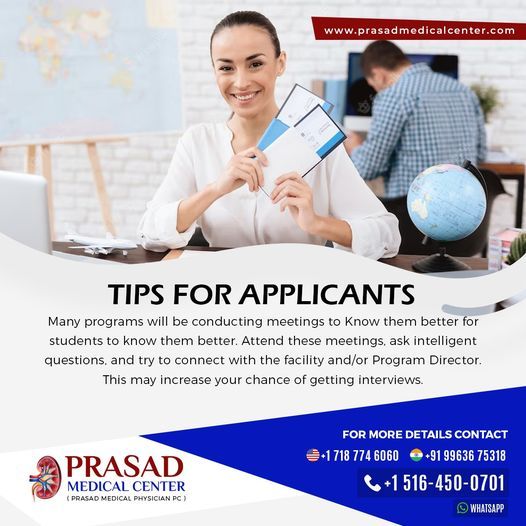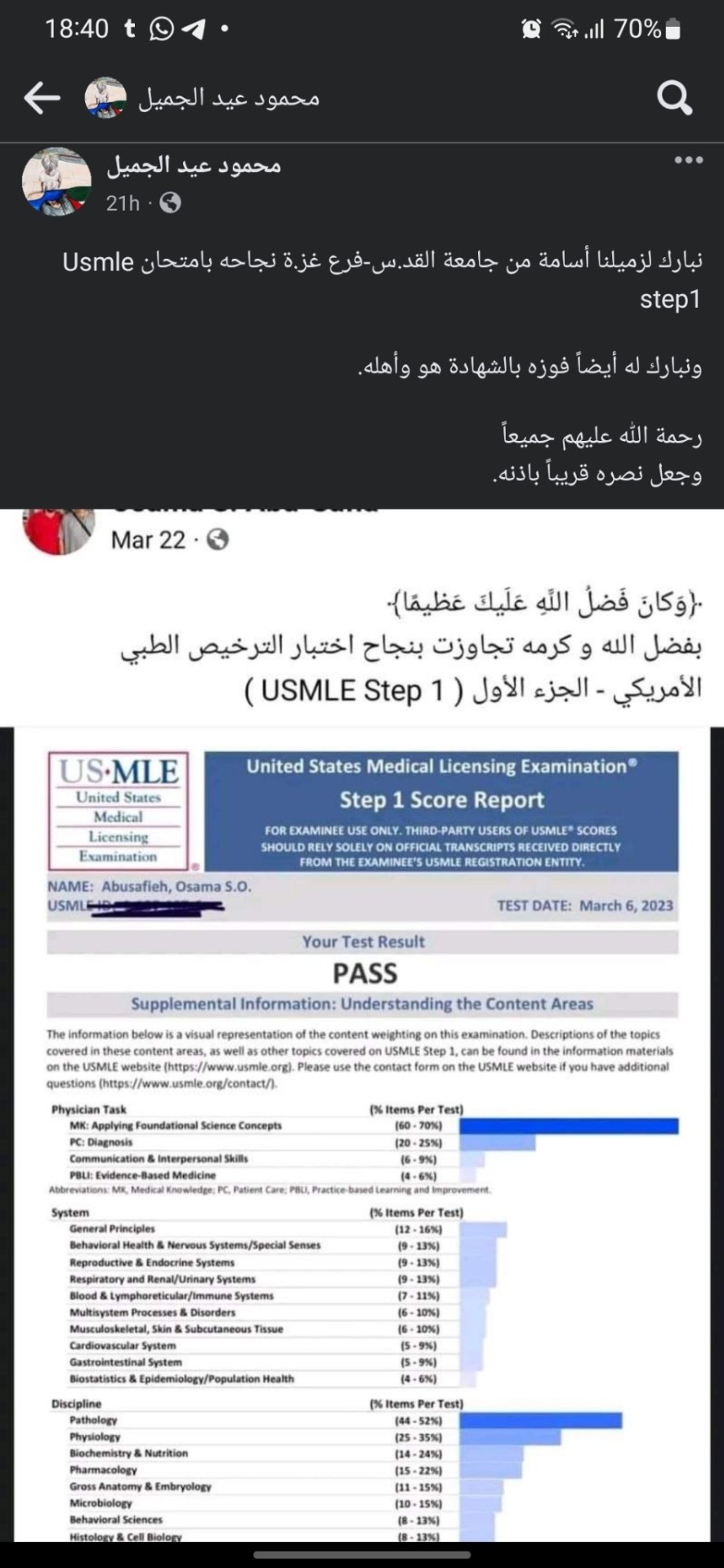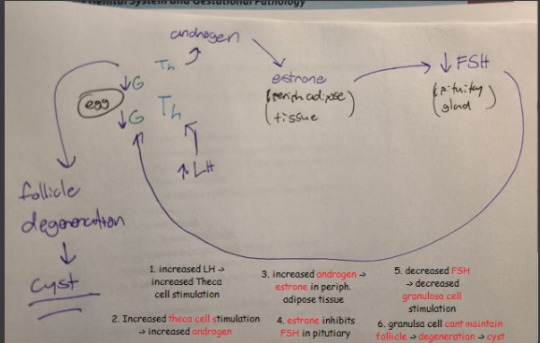#usmle step1
Explore tagged Tumblr posts
Text

StudyUSMLE is here with an exclusively designed 3 Month Course. Join our courses for USMLE STEP 1. Revise your knowledge and gain new insights for success.
1 note
·
View note
Text
USMLE Step 1
In order to practice medicine within the United States, passing the USMLE Exam, also known as the United States Medical Licensing Examination, is a prerequisite. This comprehensive examination comprises three distinct steps: Step 1, Step 2CK, and Step 3, overseen by both the Federation of State Medical Boards (FSMB) and the National Board of Medical Examiners (NBME).
Step 1, the initial stage, is a computer-based assessment conducted over one day. It evaluates candidates' comprehension of fundamental scientific principles crucial for medical practice. Typically taken following the second year of medical school, Step 1 delves into essential concepts and principles of basic sciences, emphasizing their application to health, disease, and treatment. Moreover, it verifies candidates' proficiency in scientific fundamentals essential for continual learning in the medical field.
Regarding eligibility, candidates must meet specific criteria. Those eligible to undertake Step 1 include current medical students or graduates from U.S. or Canadian medical schools leading to an MD degree accredited by the Liaison Committee on Medical Education (LCME), as well as graduates from U.S. medical schools leading to a DO degree accredited by the American Osteopathic Association (AOA).
For International Medical Graduates (IMGs) seeking to undertake Step 1, additional criteria apply. They must be officially enrolled in a medical college or university listed in the World Directory of Medical Schools (WDOMS), along with meeting other stipulated eligibility requirements outlined by the Educational Commission for Foreign Medical Graduates (ECFMG).
0 notes
Text
How to Get a Medical Residency in the USA as an International Medical Graduate

Choosing to the medical residency for IMG medical students in USA is the best opt. With world-class training opportunities and state-of-the-art facilities, landing a coveted US residency spot allows you to advance your skills and expertise to the highest level.
However, getting a US medical residency as an IMG involves a step-by-step process with many requirements along the way. By understanding and following the key steps, you’ll place yourself in the best position to match into your desired residency program.
1) Register with the USMLE
Your first step when applying for US residency positions is registering with the United States Medical Licensing Examination (USMLE). The USMLE is a three-step exam assessing an IMG’s medical knowledge and clinical skills. It is a core requirement when applying to US residency programs.
Registering is an easy process online via the USMLE website. You’ll need to create an account and provide background information on your medical education and credentials. This allows you access to schedule test dates and testing center locations.
Registering with the USMLE is the vital first step for IMGs seeking US medical residencies.
2) Pass the USMLE Exams
The next step is successfully passing all required USMLE exams. These are challenging, marathon tests covering a wide range of topics. Thorough preparation through dedicated study time and practice questions is a must.
The USMLE step structure is:
Step 1 - Assesses core concepts in basic medical sciences. Often taken after 2nd year of med school.
Step 2 CK - Focuses on medical knowledge application in clinical settings. Taken during 3rd year typically.
Step 2 CS - Evaluates clinical and communication skills through interactions with standardized patients.
Scoring well on your USMLEs signals to residency programs your strong medical knowledge foundation. It also indicates readiness for the fast-paced rigors of a US residency.
Many IMG applicants space out their exam schedule over a 1-2 year timeframe. Create your own prep timeline backward from desired residency start dates.
Allow plenty of dedicated study time to pass the USMLE exams.
3) Get Valuable Clinical Experience in the USA
In addition to tests, US residencies want applicants exposed to the American healthcare system and culture.
Gaining clinical experience in the US through observerships and clinical electives are a big advantage. These allow you hands-on learning of workflows, systems, treatments, technologies, patient populations, documentation, communication norms and more in American hospitals and clinics.
Observership organizations like Prasad Medical Center (+1 718-774-6060) assist IMGs in securing observership positions across the country. Be sure to research and understand program eligibility terms before applying.
Even a few weeks of US clinical experience can give that important edge among competitive applicants.
US clinical experience highlights adaptability to American medical norms.
4) Register with the AAMC
The Association of American Medical Colleges (AAMC) has two key systems you must access during your application process:
MSPE (Medical Student Performance Evaluation) – Official record of medical education including grades, rankings and assessment.
ERAS (Electronic Residency Application Service) – Centralized online application portal distributing all materials to selected residency programs.
Register with AAMC early to get your credentials verified, understand each platform and have ERAS documentation ready when application season starts.
Connecting with the AAMC is essential throughout the residency hunt.

5) Pick your Residency Programs
When deciding which residency programs to apply for, start broad. Identify specialties matching your interests, strengths and USMLE scores. Use online directories to make a list of reach, reasonable match and safety options across several states or regions.
Factors like location competitiveness, program size, IMG match history and curriculum emphasis can help you categorize options. Have a few safety choices with higher IMG acceptance rates.
Research programs thoroughly to have residency options at each level.
6) Get your ECFMG Token and Register with ERAS
Once programs are selected, activate your ECFMG (Educational Commission for Foreign Medical Graduates) token. This allows ERAS to verify your test scores, credentials and identity when applying.
Next, access your MyERAS applicant profile. Add your exam history, experiences, publications and other credentials that programs will review.
Double and triple check all entries for accuracy before submitting to avoid costly mistakes or delays.
MyERAS is your central application hub throughout the residency process.
7) Finalize Documentation and Submit ERAS Application
With your MyERAS profile complete, finalize all required documentation:
Personal statement
Medical school transcripts
MSPE Dean’s letter
Letters of recommendation (3+)
School catalogues
Proofread all materials thoroughly before uploading to ERAS by the deadlines. Activate program selections and assign supporting documents for each.
Carefully prepare all pieces of your ERAS application package.
8) Medical Residency Interview
With a strong application submitted early, interview offers should follow!
Interview formats vary widely across residencies. Common options include one-on-one, panel interviews, multiple mini interviews (MMIs) and virtual interviews.
Careful preparation is key. Research programs, polish answers to common questions, hone your communication style, dress professionally and send prompt thank you notes.
Treat travel associated interviews as 24/7 assessments of fit. Be gracious, avoid complaining and share your passion for medicine and interest in the program.
Interviews are critical to sealing a residency position – make the most of them!
9) Register with the NRMP
After interviewing, register with the National Resident Matching Program (NRMP) by late January. Creating your NRMP account starts the matching process based on how you rank programs and how they rank applicants.
The yearly Match Day in mid-March reveals results simultaneously to applicants across the country. This coordinated effort fills nearly 40,000 residency roles each spring.
Understand match statistics for given specialties and programs to set realistic expectations before this nerve-wracking day!
Learning match nuances helps ease the anticipation leading up to Match Day!
10) Residency Post-Match Focus
If matched, congratulations on achieving that coveted US residency program spot! Notify all relevant parties, celebrate thoroughly and handle any needed visa application processes.
Review program details to address required paperwork, licensing, preparations or moving requirements before start dates. Share excitements and ask graduated residents for advice as you transition to this intense but rewarding new chapter!
For those not matched, don’t be discouraged! Strategize about strengthening certain areas of your application and discuss options with mentors. Often success comes with perseverance and giving yourself the best opportunities the following year.
We hope this overview gives international medical graduates more clarity on the pathway to getting a US medical residency. While challenging, thousands achieve this goal annually through careful planning, dedication to preparation, and showing your passion for serving US patient populations.
If you still need assistance securing clinical experience or have any other questions along your journey, don’t hesitate to contact the knowledgeable team at Prasad Medical Center at (+1 718-774-6060) or visit https://www.prasadmedicalcenter.com/ We wish you the best of luck in achieving your American medical career dreams!
#usmle#step1#step2#step3#prasadmedicalcenter#medicalresidency#imgstudents#medicalstudents#clinicalresearch#meded
4 notes
·
View notes
Text

"We congratulate our colleague Osama from Al-Quds University - Gaza Branch on his success in the Usmle step1 exam
We also congratulate him and his family on their martyrdom. (They were all killed under the bombing of the Israeli occupation)
May God have mercy on them all"
#usmle#usmlestep1#usmleprep#medicine#gaza#palestine#israel#gaza strip#gaza under attack#gazagenocide#israelterrorist#free gaza
19 notes
·
View notes
Text
Final Year Exams, STEP 1, STEP 2 & Research Internship done in 6 months✅
My Story:
I decided to embark USMLE journey last November, got ECFMG applied and started UW for Step 1 late December 2023. I continued Step 1 prep for 2 weeks and then took a break for my university exams. In the beginning of February, I got a bizzare idea of prepping for Step 2 thanks to reddit and Free 120 of STEP 2.
So, I took UW STEP 2 in Feb. Everyday for a month, I did 2 blocks of STEP 1 & 1 block of STEP 2 system-wise. I had to stop for a month in March due to university exams. I jumped back on STEP 1 & 2 immediately after exams, this time, doing 2 blocks of STEP 2 and 1 block of STEP 1.
For STEP 1, I relied only on UW and First Aid. No NBMEs. No other resources. For STEP 2, I used UW and Inner Circle notes. No anki even though Tzancki deck was instilled on the notes.
By end of April, I was done with 90% UW STEP 1 and 60% STEP 2 UW. I sat 15 days dedicated for STEP 1 and gave exam on May and got the PASS. Took a vacation for 2 weeks and then returned back to STEP 2 prep.
I did UW upto 95%, shifted to CMS forms, did 2 each for main subjects and started NBMES. NBMES were all in 250s range except for 13 and 14 which hit 260s. I used to work full time as a research intern during June and do 80-160 questions a day. I also did a review of Inner Circle notes once during the whole month.
Dedicated:
In the month of July, I sat 3 weeks dedicated where I did AMBOSS High Yield qbank and articles. In the final weeks, I went through NBMEs once again, and reviewed the notes.
I also did AMBOSS HY 2nd pass. Did ethics screening vaccination quality and biostats from Amboss.
As for DIP, I listened to high yield stuff but only reviewed the Antibiotics and Palliative podcast in the end.
Day before Test:
Went through all NBME diagrams, did AMBOSS Ethics and Quality, quickly read through ethics articles, did Free 120 two days before the exam.
Test Day:
I was quite relaxed and had my breakfast. The exam felt fairly straight. I took breaks after every 2-3 blocks. Drank water during each break and took a toilet break. Thats all. I finished most blocks with 10-15 minutes to spare and did a 2nd pass of all the questions.
ACTUAL SCORE: 269
Overall, after solving 12k questions, I am happy to complete my fourth year exams, STEP 1 and STEP 2 together in a span of 6 months while being a student and full time research intern.
I am happy to give back to this community and would love to support and finance my further journey with paid mentorships for STEP 1 and STEP 2. If interested, check out here: https://lnkd.in/gwMDWR_9
My Learning Resources: https://lnkd.in/grGsSQnt
My YouTube: https://lnkd.in/gMcGWiUe
My Newsletter: thinkabled.com/cerebrate
Take care.
#usmle #img #step1 #step2 #match2025 #usmleimg #neurology #imresident #matchcycle #nrmp #usce #research

6 notes
·
View notes
Note
omg ur a usmle aspirant from TAMIL NADu?? me toooo
i’m in second year rn prepping for step1
I wont call myself an usmle aspirant, but I am preparing overseas accreditation. A series of events happened and my step1 is indefinitely postponed.
Anyways, second year is a great time to start the prep! All the best ✨
2 notes
·
View notes
Text
All About 4-Week Live hybrid SmashUSMLE Course
The 4-Week Live Hybrid SmashUSMLE Course is an intensive, structured program designed to prepare students for the United States Medical Licensing Examination (USMLE). This course typically combines online and in-person learning methods, allowing students to interact directly with instructors and other participants while also offering flexible online resources.
Here’s a breakdown of what this SmashUSMLE course usually includes:
Comprehensive Review: Covers essential medical topics like physiology, pharmacology, pathology, and more, focusing on high-yield content most likely to appear on the exam.
Live Lectures: Led by experienced instructors, the live sessions help students engage with the material in real-time, ask questions, and clarify complex topics.
Practice Questions & Exams: The course includes practice exams and questions to help students build test-taking skills and get comfortable with the exam format.
Hybrid Format: The “hybrid” approach means that students can join live classes either in person or online. It allows flexibility, so students can choose what works best for them.
Personalized Study Plans: Some programs offer customized study plans based on individual strengths and weaknesses to help students maximize their preparation.
Mentorship & Support: Access to mentors and tutors who can provide guidance, answer questions, and offer support throughout the course.
This 4-week course is designed to be intensive, ideal for students who need a focused and comprehensive review in a short period.
For more details, please visit here — https://www.smashusmlereviews.com/courses/step1/
0 notes
Text
Mastering USMLE Step 1: Your Ultimate Guide with Step 1 Premium Recalls Package 2024-2025
Introduction: Embarking on your journey to becoming a medical professional? Dive into our comprehensive guide to conquering the USMLE Step 1 exam, the first milestone on your path to success. With the Step 1 Premium Recalls Package 2024-2025 at your fingertips, you'll be equipped with the tools and knowledge you need to excel.
Section 1: Understanding USMLE Step 1 Discover the importance of USMLE Step 1 and why it's crucial to approach this exam with dedication and focus. Learn how success on Step 1 sets the stage for your future endeavors in the medical field.
Section 2: Exam Format Demystified Gain insight into the format of the USMLE Step 1 exam, including its structure, duration, and question types. Familiarize yourself with the exam interface through our interactive testing experience.
Section 3: Passing Criteria Decoded Uncover the passing criteria for Step 1 and explore strategies for achieving a score that reflects your knowledge and capabilities. Learn how to navigate the exam confidently and effectively.
Section 4: Strategic Preparation Strategies Explore expert tips for strategically preparing for Step 1, including when to start studying and how to select the best resources. Maximize your study time and optimize your learning experience with proven strategies.
Section 5: Top Resources for Success Browse through our curated list of top resources for Step 1 preparation, including qbanks, video lessons, review books, and mnemonic aids. Find the resources that align with your learning style and preferences.
Section 6: YouTube Channel Recommendations Enhance your understanding of key Step 1 concepts with recommended YouTube channels specializing in relevant topics. Access valuable insights and visual aids to supplement your studies and reinforce your knowledge.
Section 7: Proven Study Schedules Access pre-designed study schedules tailored to your timeline, whether you have nine weeks or ten. Follow structured approaches to ensure maximum productivity and retention during your dedicated study period.
Section 8: Inspiring Success Stories Draw inspiration from real-life success stories shared by students who have conquered Step 1 using various study methods and resources. Learn from their experiences and apply their strategies to your own preparation journey.
Section 9: Score Release and Next Steps Prepare for score release day and understand what to expect, whether you pass or fail. Stay informed about score result delays and take proactive steps to navigate your Step 1 journey with confidence.
Conclusion: With the Step 1 Premium Recalls Package 2024-2025 and our comprehensive guide, you have everything you need to succeed on the USMLE Step 1 exam. Empower yourself with knowledge, stay focused, and embark on your journey to medical excellence. Your success story begins here!
#USMLE #Step1 #MedicalSchool #MedEd #StudyTips #ExamPrep #MedicalStudents #FutureDoctors #Step1PremiumRecalls #USMLE2024 #USMLE2025 #MedicalEducation #StudyGuide #SuccessStories #StudySchedule #ResourceRecommendations #Tumbler
0 notes
Video
youtube
Krok 1 Important Mcq Discussion - Jaundice
#krok1#usmle#usmle step1#usmle step1 prep#usmle step2#usmle review#usmlestep1#usmlestep2ck#usmleprep#fmge#krok#mci#nextexam#plab#comlex#nclex#jaundice#neetpg
14 notes
·
View notes
Photo

Careful what you (just) wish for. #MondayMotivation
#MondayMotivation#motivation monday#desaintexupery#botd#motivationmonday#monday motivation#meded#medstudentlife#medstudentmotivation#futuredoctor#usmle#mcat#premed#premedlife#usmle step1
7 notes
·
View notes
Link
Clinical Skills For Medical Students, USMLE Step 2 CS
#usmle#usmleprep#usmle notes#usmle review#step 2 cs#Clinical Skills#USMLE CS Practice#Step 2 CS Guide#Step 2 CS Schedule#Step 2 CS Exam#USMLE Step1#USMLE Step 2 CK#clinical skills training#USA#New York#new jeresy#Caribbean#Caribbean Countries
2 notes
·
View notes
Text

Here’s a quick overview of various platelet disorders for USMLE!
Key-
PC- Platelet count
BT- Bleeding time
PT- Prothrombin time
PTT- Activated partial thromboplastin time
BM- Bone marrow
0 notes
Text
I got my usmle step 1 score and I didn’t do so great. (225)
I’m in shock because every self assessment I took, I scored in 240s
I want to do IM, but it seems less likely now as a non US Img unless I can do better in CK And somehow do a lot of electives and research.
For now, I just want to lie motionless, in shock.
The worst thing is that I really did my best, I thought the test went well, and I just feel like what if, if this is my best, then what if I can never do better?
7 notes
·
View notes
Text
PCOS

2 notes
·
View notes
